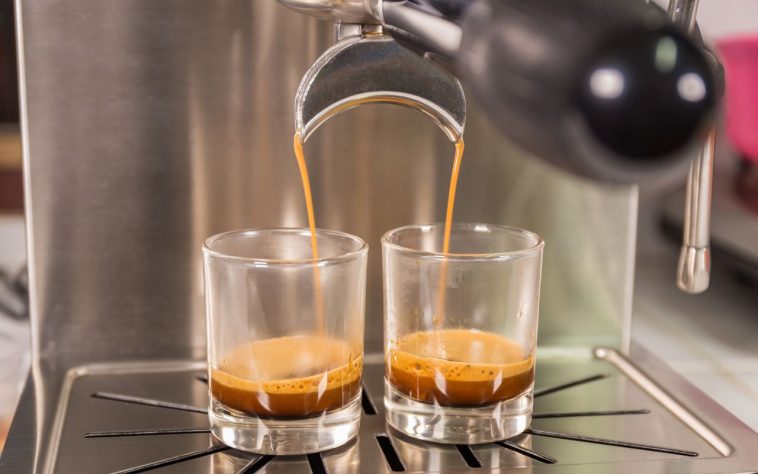Brewing the perfect espresso at home is both an art and a science. While coffee shops use high-end machines, you can still achieve barista-quality espresso with the right techniques, beans, and equipment.
Whether you’re a beginner or an espresso enthusiast, here’s a step-by-step guide to making rich, smooth, and flavorful espresso at home.
1. Choose the Right Coffee Beans ☕🌱
The foundation of great espresso starts with high-quality beans.
✔ Best Espresso Beans:
✅ Medium to dark roast – Balances sweetness, acidity, and body.
✅ Freshly roasted – Use beans roasted within 2-4 weeks for maximum flavor.
✅ 100% Arabica or a blend with Robusta – Arabica provides smooth, rich flavors, while Robusta adds crema and boldness.
💡 Pro Tip: Avoid pre-ground coffee. Freshly grind your beans just before brewing for the best taste.
2. Grind Size Matters: Go Fine, But Not Too Fine ⚙️
Grinding is one of the most important steps for a perfect espresso shot.
✔ Ideal Espresso Grind Size:
✅ Fine, but not powdery – Similar to table salt.
✅ Too fine? – Your espresso will extract too slowly and taste bitter.
✅ Too coarse? – It will extract too quickly, leading to weak, sour flavors.
💡 Pro Tip: Use a burr grinder, not a blade grinder, for a consistent grind size.
3. Master the Espresso Shot (Time & Ratio) ⏳
A perfect espresso shot follows the Golden Ratio:
✔ Coffee-to-Water Ratio: 1:2 (18g of coffee → 36g of espresso)
✔ Extraction Time: 25-30 seconds
✔ Espresso Yield: 30-40ml (single shot)
How to Pull the Perfect Shot:
1️⃣ Preheat your espresso machine – Run hot water through it to stabilize temperature.
2️⃣ Use the right amount of coffee – Typically 18-20g for a double shot.
3️⃣ Tamp evenly – Press the grounds firmly to create an even surface.
4️⃣ Start extraction – Aim for a 25-30 second pull time.
5️⃣ Check the crema – A golden, thick crema indicates a great shot.
💡 Pro Tip: If the espresso is too bitter, grind coarser; if it’s too sour, grind finer.
4. Use the Right Water Temperature & Pressure 💧🔥
Espresso requires precise temperature and pressure to extract the best flavors.
✔ Water Temperature: 90-96°C (195-205°F)
✔ Pressure: 9 bars (the ideal level for rich espresso)
💡 Pro Tip: Use filtered water to avoid bad-tasting minerals and residue buildup in your machine.
5. Tamping: The Key to Even Extraction 🏋️
Tamping is the process of compressing the coffee grounds in the portafilter.
✔ Apply firm, even pressure (30 lbs of force) – This prevents water from flowing unevenly.
✔ Use a level tamp – Uneven tamping creates under-extracted or over-extracted espresso.
✔ Don’t over-tamp – Press just enough to make a solid puck without compacting too hard.
💡 Pro Tip: Use a flat-bottom tamper for the best results.
6. Look for the Perfect Crema ☕✨
Crema is the golden, foamy layer on top of a great espresso shot.
✔ Thick, golden crema – Indicates fresh coffee and proper extraction.
✔ Too thin? – Coffee is stale, or the grind is too coarse.
✔ Too dark or bubbly? – Over-extraction due to fine grind or high temperature.
💡 Pro Tip: Crema adds texture and richness to your espresso—don’t stir it!
7. Fine-Tune the Taste: Avoid Common Mistakes 🚨
Common Espresso Problems & How to Fix Them
| Issue | Cause | Solution |
| Sour or weak espresso | Under-extracted, grind too coarse, low temperature | Use finer grind, increase extraction time |
| Bitter, burnt taste | Over-extracted, grind too fine, high temperature | Use coarser grind, reduce extraction time |
| Watery espresso | Low coffee dose, poor tamping | Use more coffee, tamp evenly |
| No crema | Stale beans, incorrect grind | Use fresh beans, adjust grind size |
💡 Pro Tip: Make small adjustments and taste-test to find your ideal settings.
8. Experiment with Espresso-Based Drinks ☕🥛
Once you master espresso, try making:
✔ Americano – Espresso + hot water for a milder taste.
✔ Latte – Espresso + steamed milk + light foam.
✔ Cappuccino – Equal parts espresso, steamed milk, and milk foam.
✔ Flat White – Espresso + microfoam milk (less foam than a cappuccino).
✔ Macchiato – Espresso with a small amount of milk foam.
💡 Pro Tip: To steam milk at home without a steam wand, use a French press or frother to create microfoam.
9. Keep Your Espresso Machine Clean 🧼
Regular cleaning keeps your espresso tasting fresh and prevents machine damage.
✔ Daily Cleaning:
- Rinse portafilter and basket after each use.
- Wipe steam wand and purge after frothing milk.
✔ Weekly Cleaning:
- Backflush your machine (if applicable).
- Clean the group head with a brush.
✔ Monthly Cleaning:
- Descale your machine to remove mineral buildup.
💡 Pro Tip: Use filtered water to reduce scale buildup and keep your machine in top shape.
10. The Best Home Espresso Equipment 🏡☕
For serious home baristas, investing in quality equipment makes all the difference.
Recommended Home Espresso Machines:
✔ Beginner: De’Longhi Dedica, Breville Bambino Plus
✔ Intermediate: Gaggia Classic Pro, Breville Barista Express
✔ Advanced: Rancilio Silvia, La Marzocco Linea Mini
Best Espresso Grinders:
✔ Entry-Level: Baratza Encore ESP, Timemore C2
✔ Mid-Range: Eureka Mignon Specialita, Niche Zero
✔ High-End: Mazzer Mini, DF64
💡 Pro Tip: A good grinder is more important than an expensive machine for achieving a perfect shot.
Final Thoughts: Mastering Espresso at Home
Making the perfect espresso at home takes practice and patience, but with the right beans, grind size, and technique, you can brew café-quality espresso anytime!
✔ Start with fresh, high-quality beans.
✔ Dial in your grind size and extraction time.
✔ Use proper tamping and brewing techniques.
✔ Clean your equipment regularly for the best taste.
🌍 Are you an espresso lover? What’s your favorite home brewing tip? Let us know in the comments!




GIPHY App Key not set. Please check settings